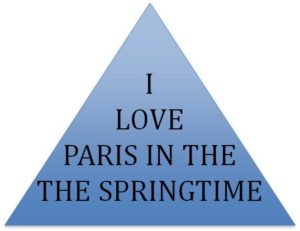Introduction
“Once I was hiking at Cape Lookout State Park in Tillamook, Oregon. After passing through a vibrantly colored, pleasantly scented, temperate rainforest, I arrived at a cliff overlooking the Pacific Ocean. I grabbed the cold metal railing near the edge and looked out at the sea. Below me, I could see a pod of sea lions swimming in the deep blue water. All around me I could smell the salt from the sea and the scent of wet, fallen leaves.”
This description of a single memory highlights the way a person’s senses are so important to our experience of the world around us.

Before discussing each of our extraordinary senses individually, it is necessary to cover some basic concepts that apply to all of them. It is probably best to start with one very important distinction that can often be confusing: the difference between sensation and perception. The physical process during which our sensory organs—those involved with hearing and taste, for example— respond to external stimuli is called sensation. Sensation happens when you eat noodles or feel the wind on your face or hear a car horn honking in the distance. During sensation, our sense organs are engaging in transduction, the conversion of one form of energy into another. Physical energy such as light or a sound wave is converted into a form of energy the brain can understand: electrical stimulation. After our brain receives the electrical signals, we make sense of all this stimulation and begin to appreciate the complex world around us. This psychological process—making sense of the stimuli—is called perception. It is during this process that you are able to identify a gas leak in your home or a song that reminds you of a specific afternoon spent with friends.
Regardless of whether we are talking about sight or taste or any of the individual senses, there are a number of basic principles that influence the way our sense organs work. The first of these influences is our ability to detect an external stimulus. Each sense organ—our eyes or tongue, for instance—requires a minimal amount of stimulation in order to detect a stimulus. This absolute threshold explains why you don’t smell the perfume someone is wearing in a classroom unless they are somewhat close to you. Because absolute threshold changes throughout the day and based on what other stimuli you have recently experienced, researchers define absolute threshold as the minimum about of stimulation needed to detect a stimulus 50% of the time.
The way we measure absolute thresholds is by using a method called signal detection. This process involves presenting stimuli of varying intensities to a research participant in order to determine the level at which he or she can reliably detect stimulation in a given sense. During one type of hearing test, for example, a person listens to increasingly louder tones (starting from silence). This type of test is called the method of limits, and it is an effort to determine the point, or threshold, at which a person begins to hear a stimulus (see Additional Resources for a video demonstration). In the example of louder tones, the method of limits test is using ascending trials. Some method of limits tests use descending trials, such as making a light grow dimmer until a person can no longer see it. Correctly indicating that a sound was heard is called a hit; failing to do so is called a miss. Additionally, indicating that a sound was heard when one wasn’t played is called a false alarm, and correctly identifying when a sound wasn’t played is a correct rejection.
Through these and other studies, we have been able to gain an understanding of just how remarkable our senses are. For example, the human eye is capable of detecting candlelight from 30 miles away in the dark. We are also capable of hearing the ticking of a watch in a quiet environment from 20 feet away. If you think that’s amazing, I encourage you to read more about the extreme sensory capabilities of nonhuman animals; many animals possess what we would consider super-human abilities.
A similar principle to the absolute threshold discussed above underlies our ability to detect the difference between two stimuli of different intensities. The differential threshold (or difference threshold) or just noticeable difference ( JND), for each sense has been studied using similar methods to signal detection. To illustrate, find a friend and a few objects of known weight (you’ll need objects that weigh 1, 2, 10 and 11 lbs.—or in metric terms: 1, 2, 5 and 5.5 kg). Have your friend hold the lightest object (1 lb. or 1 kg). Then, replace this object with the next heaviest and ask him or her to tell you which one weighs more. Reliably, your friend will say the second object every single time. It’s extremely easy to tell the difference when something weighs double what another weighs! However, it is not so easy when the difference is a smaller percentage of the overall weight. It will be much harder for your friend to reliably tell the difference between 10 and 11 lbs. (or 5 versus 5.5 kg) than it is for 1 and 2 lbs. This is phenomenon is called Weber’s Law, and it is the idea that bigger stimuli require larger differences to be noticed. As with the absolute threshold, your ability to notice differences varies throughout the day and based on what other stimuli you have recently experienced so the difference threshold is defined as the smallest difference detectable 50% of the time.
Crossing into the world of perception, it is clear that our experience influences how our brain processes things. You have tasted food that you like and food that you don’t like. There are some bands you enjoy and others you can’t stand. However, during the time you first eat something or hear a band, you process those stimuli using bottom-up processing. This is when we build up to perception from the individual pieces. Sometimes, though, stimuli we’ve experienced in our past will influence how we process new ones. This is called top-down processing. The best way to illustrate these two concepts is with our ability to read. Read the following quote out loud:

Notice anything odd while you were reading the text in the triangle? Did you notice the second “the”? If not, it’s likely because you were reading this from a top-down approach. Having a second “the” doesn’t make sense. We know this. Our brain knows this and doesn’t expect there to be a second one, so we have a tendency to skip right over it. In other words, your past experience has changed the way you perceive the writing in the triangle! A beginning reader—one who is using a bottom-up approach by carefully attending to each piece—would be less likely to make this error.
Finally, it should be noted that when we experience a sensory stimulus that doesn’t change, we stop paying attention to it. This is why we don’t feel the weight of our clothing, hear the hum of a projector in a lecture hall, or see all the tiny scratches on the lenses of our glasses. When a stimulus is constant and unchanging, we experience sensory adaptation. This occurs because if a stimulus does not change, our receptors quit responding to it. A great example of this occurs when we leave the radio on in our car after we park it at home for the night. When we listen to the radio on the way home from work the volume seems reasonable. However, the next morning when we start the car, we might be startled by how loud the radio. We don’t remember it being that loud last night. What happened? We adapted to the constant stimulus (the radio volume) over the course of the previous day and increased the volume at various times.
Now that we have introduced some basic sensory principles, let us take on each one of our fascinating senses individually.

